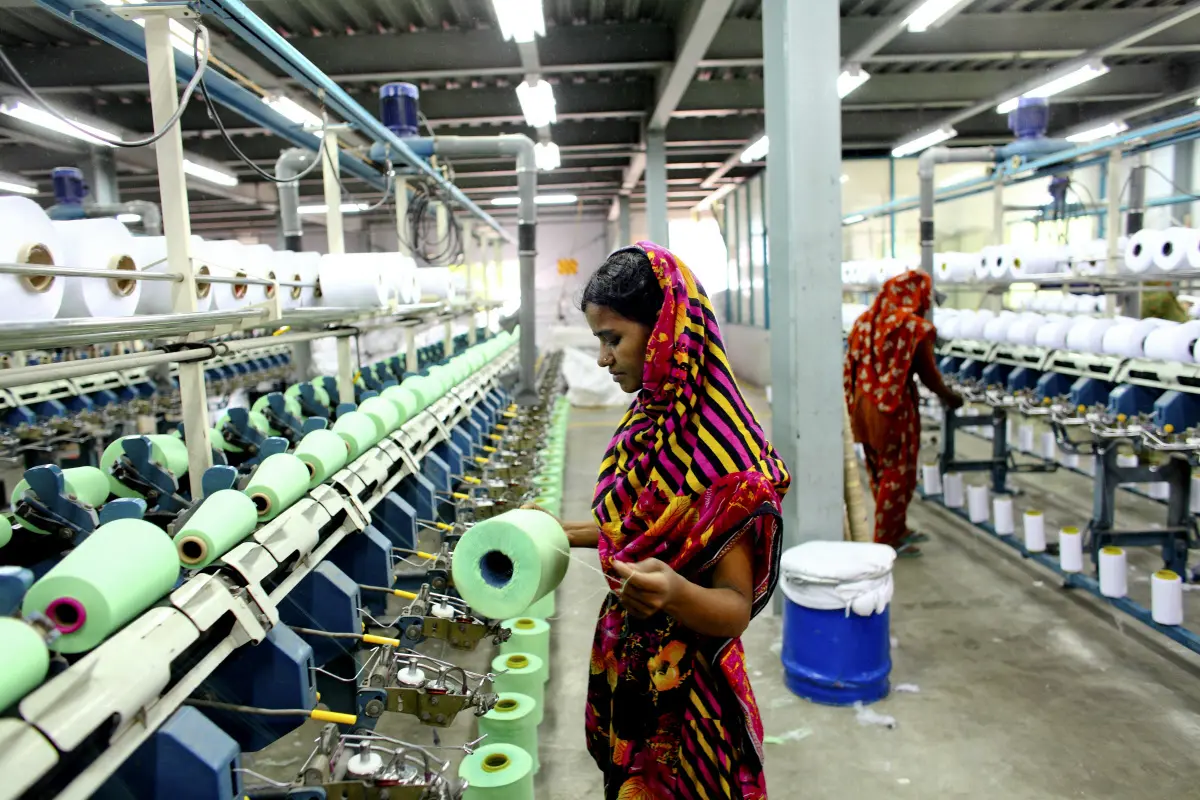From the report it emerged that thirty-six percent of the responders in the Millennials age group (26-41 years old) were classified as high-intensity returners
The British Fashion Council (BFC)’s report
In March 2023, the report Solving Fashion’s product returns The Circular Fashion Ecosystem Project: How to keep value in a closed-loop system was published. Prepared by the British Fashion Council (BFC)’s Institute of Positive Fashion (IPF) and the German management consultancy company Roland Berger, the report was meant to be part of the Circular Fashion Ecosystem Project (CFE) projects’ Phase 2 suite.
This British Fashion Council report investigates the environmental effects of the fashion industry’s returns, their motivations, and measures to reduce returns and their environmental impact. They found that each returned garment has a significant environmental impact due to emissions connected to reverse logistics and probable waste generated if an item cannot be sold again.
Investigating the reasons behind returns and exploring policies that would reduce their impact
«To arrive at a circular fashion economy, we need to challenge current systems and mitigate waste across all operations, including product returns, which is hugely damaging to both business and the health of the planet. For our first Circular Fashion Ecosystem Phase 2 Project, we investigated the reasons behind returns and explored features and policies that would reduce their need and associated impact. The research led us to two target outcomes which, when combined, create a target state where the fashion industry can be held accountable for our products and enable a more responsible future», Said Caroline Rush, the British Fashion Council’s Chief Executive since 2009.
The British Fashion Council (BFC)
The British Fashion Council (BFC) is a London-headquartered British not-for-profit organization funded by the British government, industry members, and commercial sponsors. This organization seeks to promote the interests of British designers and the country’s fashion industry.
Founded in 1983, the British Fashion Council is the organization behind the ‘Fashion Awards’, the yearly ceremony held in London and formerly known as the British Fashion Awards. The British Fashion Council established the Institute of Positive Fashion (IPF) in 2020. The Circular Fashion Ecosystem Project is the institute’s first project.
The state of the fashion industry: trends, models, and impacts
The majority of the fashion industry operates in adherence to a linear economy model in which limited resources such as freshwater and raw materials are employed in an open loop system that generates waste due to the early disposable linked to planned obsolescence, accelerated production, and trend turnovers.
According to the Ellen MacArthur Foundation report, a doubling of the average number of times a garment is worn would result in a forty-four percent reduction in greenhouse gas emissions.
WRAP’s report
A report by WRAP found that by increasing the lifespan of clothing by nine months, carbon emissions, water use, and waste generation would be decreased by almost thirty percent. Fashion has an indirect impact, with 500,000 tons of microplastics being released into the oceans per year from textiles alone.
The textile industry’s production in the past two decades has doubled, along with the annual per-capita consumption of textiles (Shirvanimoghaddam, Motamed, Ramakrishna, Naebe, 2020). In 2022, the global apparel market’s revenue amounted to one-point-fifty-three trillion U.S. dollars, which is expected to rise to more than one-point-seven trillion U.S. dollars in the current year.
The Circular Fashion Ecosystem Project: How to keep value in a Closed-loop System report
The global fashion industry accounts for about five percent of global greenhouse gas emissions, second to food and construction (World Economic Forum, 2021). In addition, this industry employs ninety-three billion cubic meters of water each year and uses ninety-eight million tons of non-renewable resources.
According to the Solving Fashion’s product returns The Circular Fashion Ecosystem Project: How to keep value in a Closed-loop System report, one tons of clothing comes with an average CO2 footprint of nineteen-point-five tons.
The European Parliamentary Research Service’s 2019 briefing Environmental impact of the textile and clothing industry: What consumers need to know reported that between 1996 and 2012, pro-capita clothing consumption among European Union residents has risen by forty percent.
Clothing and footwear comprise five percent of the EU’s household expenditure, while more than thirty percent of the garments owned by Europeans haven’t been used for at least a year. According to the same briefing, between two and ten percent of the European Union consumption’s environmental impact is caused by clothing.
The inputs behind the British Fashion Council report
For this report, the researchers conducted a literary review of more than one-hundred sources ranging from journals to corporate websites. To investigate the phenomenon of returns amongst British shoppers, they carried out between July and August 2022 an online survey involving more than 1,500 participants.
Regarding stakeholder voice, the organization arranged stakeholder interviews, a panel discussion, breakout teams at IPF Forum, and board meetings.
The environmental impact of fashion returns: the numbers
Fashion return is the term used to define the act of a shopper returning fashion items to a store in exchange for an equivalent item, a refund, or store credit. The returned clothing can be restocked or resold through a process called reverse logistics.
At the end of this process, these clothes might not be sold to another customer but get disposed of through incineration or in a landfill. This process can be expensive for the retailer and generate a significant environmental footprint.
According to data from the British Office for National Statistics, compared to before the Covid-19 pandemic, the portion of online spending on clothing has stayed higher. Clothing, shoes, bags, and accessories were among the most returned item categories online in 2022. Online purchases are more likely to be returned from what has transpired from the report’s research.
Half of the returned fashion goods that can’t be resold end up in landfills
Compared to the ten percent of the items purchased via brick-and-mortar stores, thirty percent of fashion purchased online are returned. This data indicating a higher return rate for online purchases is made more relevant by the expectation that in 2024 consumers will make more fashion sales online than in brick-and-mortar shops.
The report showed that three percent of the returned items are not resold. In addition, it emerged that half of the returned fashion goods that can’t be resold end up in landfills, while a quarter of these gets recycled and the other quarter gets incinerated.
According to the British Fashion Council report, due to laborious processing, including washing and ironing, packaging, and transportation, fashion returns generate 750,000 tons of carbon dioxide (CO2) emissions. Three hundred fifty thousand tons of CO2, almost half of the total, are emitted by reverse transportation alone, which can be made worse by the shorter delivery times.
Why do people return their clothes? consumers’ behavior and attitudes
The data collected through the online survey by the Institute of Positive Fashion, first-party data platform Dynata and Roland Berger shone a light on consumer returns behavior, expectation, and needs in the United Kingdom. The survey examined the distribution of high and low-intensity returners and shoppers by gender and age group.
The survey showed that among the Generation Z respondents, people born between 1997 and 2012 and aged between ten and twenty-five years old, thirty-two percent were high-intensity online shoppers, defined in the report as people who buy a higher than average number of fashion items online.
In terms of returns, among the respondents in this age group, thirty-two percent were categorized as high-intensity returners, returning more than the average thirty percent online return rate.
Womenswear is the most returned online fashion item category
Thirty-six percent of the responders in the Millennials age group were classified as high-intensity returners. Among older shoppers above the age of forty-one, the percentage of high-intensity online shoppers and returners is lower at nineteen and twenty percent.
From the survey, it emerged that womenswear is the most returned online fashion item category, while incorrect fit and size and the purchased item’s quality failing to meet expectations are the most common reasons behind fashion returns among the respondents.
The Circular Fashion Ecosystem Project
The Solving Fashion’s product returns The Circular Fashion Ecosystem Project: How to keep value in a closed-loop system report suggests recommendations to minimize returns that can be implemented by a variety of stakeholders, from governments, manufacturers, and reprocessors to academia, brands, and collectors.
Among these are short-term recommendations, such as improving product visualization and information and implementing stricter returns policies, and medium to long-term recommendations, such as adopting digital product passports and increasing consumer awareness.
The British Fashion Council (BFC)
A British not-for-profit organization seeking to promote the interests of British designers and the country’s fashion industry.




















